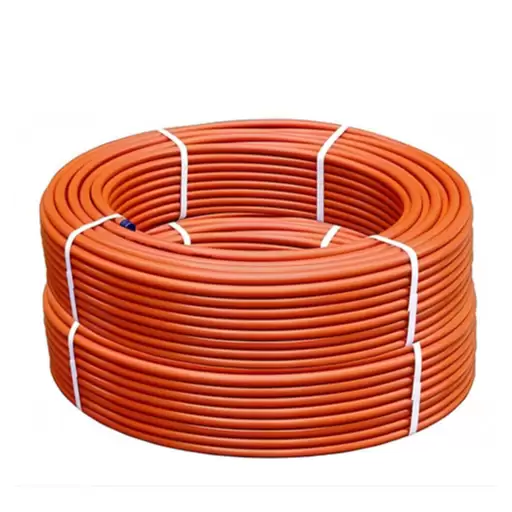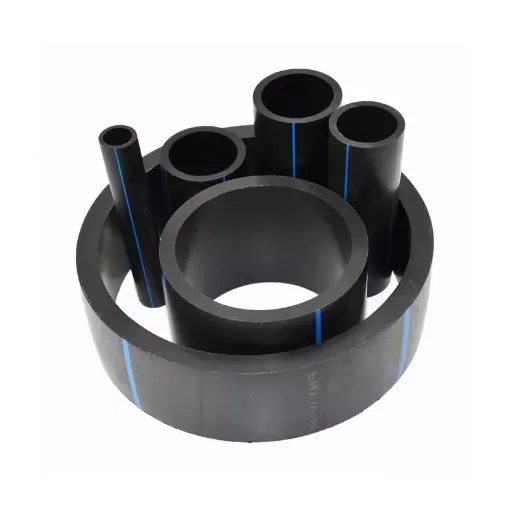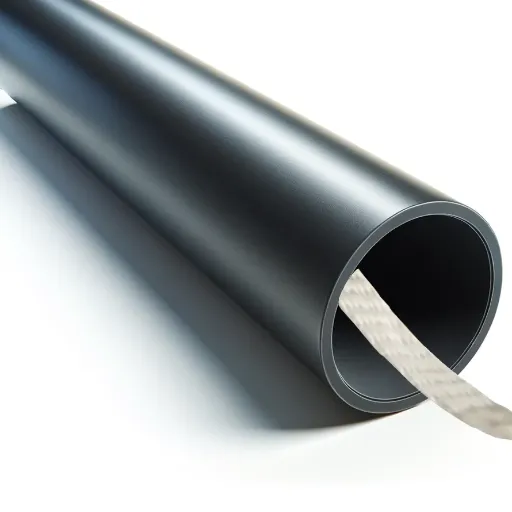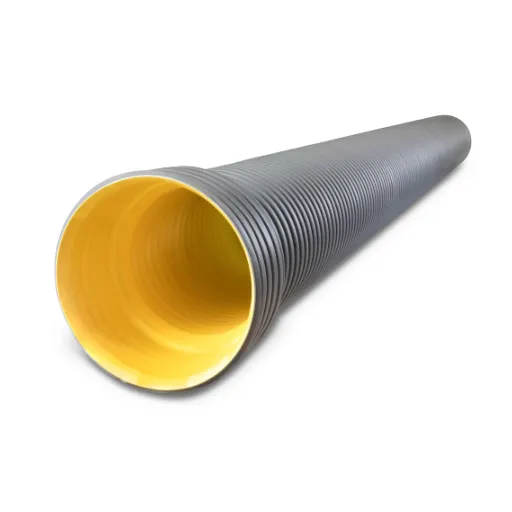High-Density Polyethylene (HDPE) electrical conduit has revolutionized the way industries approach electrical wiring infrastructure. Renowned for its superior durability, flexibility, and resistance to environmental stress, HDPE conduit offers an innovative solution to many challenges faced in both residential and industrial applications. This article explores the key advantages of HDPE electrical conduit and highlights its diverse applications across different environments, from underground utilities to renewable energy projects. Whether you’re an electrical engineer, contractor, or project manager, understanding why HDPE conduit is becoming the preferred choice in modern installations will provide you with valuable insights into enhancing efficiency and long-term performance for critical electrical systems.
What is an HDPE Electrical Conduit?
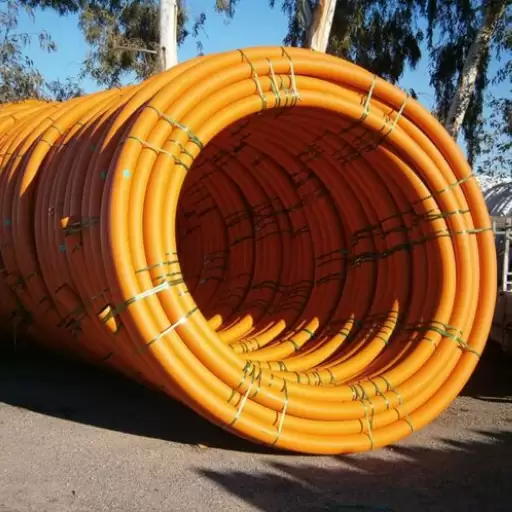
Image source: https://www.acu-tech.com.au/
Understanding HDPE Conduit
A High-Density Polyethylene conduit is a flexible and highly durable conduit for general electric and telecom conduit installations. Being manufactured from a thermoplastic polymer known for its high strength-to-density ratio, HDPE conduit offers phenomenal physical characteristics suitable for enclosing and protecting cables. The conduit presents flexibility coupled with corrosion resistance, resistance to chemicals, and resistance to adverse environmental conditions, making it one of the most long-lasting materials with minimal need for maintenance when compared to conventional materials such as PVC or metal conduits. Such advantages go a long way in applications where dependability and strength become of utmost importance, including installation under the earth or places that endure tough climatic variations.
Versatility is an important feature that HDPE conduit offers to a great degree. It comes in all different sizes and wall types (Schedule 40, Schedule 80, or SDR, for example) to suit different needs and can be provided with smooth or corrugated walls. It can also be supplied on reels in continuous lengths to avoid joints during installation, hence eliminating potential weak spots. This feature proves to be highly advantageous during horizontal directional drilling (HDD) and other techniques of conduit installation. This way, installation with the least interruption is ensured while lowering labor, time, and cost, thus making HDPE conduits a good economic choice for the contractor and engineer for installation.
Commonly referred to as “duct” in telecommunications and fiber-optic cabling, it becomes more significant in holding structural integrity for various cable types. Also, being recyclable implies it is an eco-friendly product toward the initiative of sustainable infrastructure development on a global scale. For power distribution, broadband deployment, and intelligent traffic management, HDPE conduit stands as a cutting-edge choice for modern utility networks.
Types of HDPE Electrical Conduit
Various types of HDPE electrical conduits are designed for specific applications and environmental conditions. They include:
- Standard HDPE Conduit: This type is versatile enough to be utilized in underground and aboveground settings. Its strength enables it to withstand the harshness of any environment, making it a good choice for numerous projects.
- Rigid HDPE Conduit: It is explicitly designed for situations requiring a rigid structure, providing excellent protection to electrical cables at locations with risks of impact or physical damage. This is suitable for direct burial and can be used in instances with higher load requirements.
- Flexible HDPE Conduit: No fittings are needed since this type allows curves and bends, resulting in an efficient installation solution using a tight turn where necessary. As such, this flexibility is beneficial when installing complex wiring paths or restricted access areas.
These varying HDPE conduit varieties address different needs in electrical installations to ensure that these projects are finalized promptly while maintaining safety and reliability within them.
What are the Advantages of HDPE Conduit?
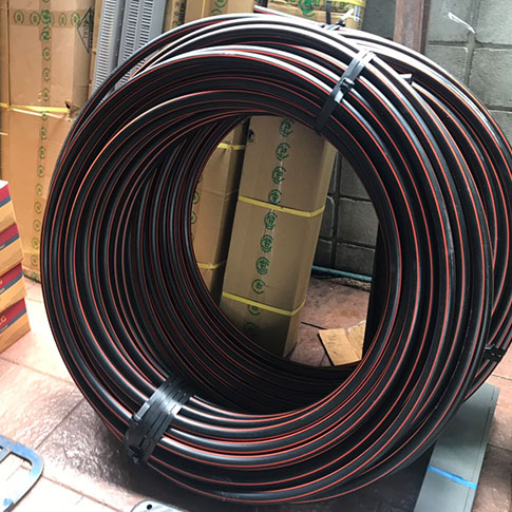
Durability and Longevity
In the assessment of functionality or life cycle of a product, material, or system, the factors of durability and longevity are elementary. A product’s longevity is underlined by its constitution in terms of material, the conditions it is subjected to in the environment, and the maintenance schedule it undergoes. For example, in the construction industry, when adequately designed and maintained, reinforced concrete and steel are said to have high durability and, commonly, can sustain a life cycle of several decades when exposed to normal conditions, with very little deterioration. By way of example, in the electronics industry, a device is mostly evaluated with respect to its durability, which is dependent on the hardware durability as well as the software lifecycle management systems.
Improving durability would encompass achieving an in-depth understanding of material properties and degradation mechanisms. For instance, since modern materials do not tolerate corrosion, ultraviolet rays, or wear very well, scientists have developed composites, alloys, and coatings specifically to resist such phenomena. The use of such materials in product design allows products manufactured with these new technologies to surpass their traditional counterparts in performance, heralding longer service life and less maintenance. Besides, industries are also tending towards predictive maintenance techniques lately, working with data analytics coupled with IoT sensors to analyze wear patterns and address possible incipient failures in advance. These techniques ensure that the asset stays alive for longer, so there are direct economic savings, plus the sustainability factor.
From a sustainability perspective, however, the aspect of added durability and longevity would also be a much wider consideration. Long-lived products alleviate demand for raw materials, less the generation of wastes, and result the lower emissions of carbon through the production and replacement cycle. This is the reason why many industries have engaged life cycle assessment (LCA) models to assess the environmental impact of a product and to find ways of improving its design. For recycling, for example, in the cases of aluminum and plastics, emphasis is put on maintaining the integrity of the materials as a way of ensuring that material longevity is preserved, so as to fall under the ambit of global inclination towards circular economies. With a bias for improved longevity and durability, the manufacturers will be able to offer solid solutions that will last from both an economic and a green standpoint.
Chemical and Corrosion Resistance
Chemical corrosion and resistance are properties that can determine the longevity and durability of materials, especially with industrial and environmental applications. A material with high chemical resistance cannot degrade when exposed to harsh substances such as acids, alkalis, or solvents, thus ensuring structural integrity and continued function. Corrosion resistance, on the other hand, can prevent materials from being degraded in an oxidative environment that is generally prevalent in high-salt environments due to the presence of salt or pollutants.
Aluminum alloys can also themselves be an example to prove the concept: They are resistant to atmospheric corrosion due to the formation of an oxide film and are hence widely used in the construction and automobile sectors. Plastics such as polyethylene and polyvinyl chloride (PVC) have high chemical resistance, allowing them to be used for piping and containers for aggressive liquids. Besides that, stainless steels, particularly the austenitic stainless steels such as stainless steel 316L, provide excellent corrosion resistance coupled with a mechanical property profile that allows them to be used in marine and chemical processing industries.
The attributes are usually quantified by stringent standard testing methods like ASTM G31 (for corrosion testing in immersion) or chemical compatibility charts for polymer materials. The data acquired through these evaluations inform the selection of materials suitably adapted to the specific demands of an operation, slashing the incidence of failure, and associated maintenance costs within the operation, thus achieving sustainability goals. Chemical and corrosion resistance can then be further improved with the incorporation of advanced protective coatings and new alloy formulations, following industrial trends focusing on performance enhancement and efficient use of resources.
Flexibility and Installation Ease
The flexibility of modern materials facilitates installation procedures and grants structural integrity to new and old infrastructures for the long term. Flexible materials display an immense variety of adaptability; hence, they conform to incongruent surfaces and dynamic environmental conditions that include temperature variations, seismic shifts, and thermal expansions. Hence, flexible polymer composites have successfully been modified to fit applications requiring withstanding stresses while remaining lightweight to ease transport and deployment.
Modularity and pre-engineering are advanced materials that further ease installation. Prefabricated systems generally assemble off-site, further ensuring that limited time will be spent on site for assembly, thus lessening the amount of labor needed to complete the work and reducing risks borne by the usually extensively longer installation. Further developments, such as self-sealing joints and quick-connect coupling mechanisms, reduce dependency on specialized tooling and significantly shorten project durations, thereby improving operational efficiency. Recent observations in projects utilizing modern flexible materials suggest a reduction of up to 30% in installation time as compared to traditional systems.
Moreover, they also contribute toward cost-cutting and maintaining some degree of environmental consciousness. Requiring fewer resources and diminishing installation delays creates more money for the industry to spend while it turns toward sustainable practices. Research into recyclable and reusable materials thus stands as another plus for techniques that allow industries to customize the trails of installation while adhering to burgeoning regulatory requirements that emphasize environmental responsibility. These different technological advances highlight the importance of linking the high flexibility of material with ease of installation and sustainable execution of projects.
How to Install HDPE Electrical Conduit Pipe?
Trench and Directional Drilling Methods
Trenches and directional drilling are essential construction activities involved in laying underground utilities, pipelines, and telecommunication networks. Each method serves its purposes with considerations for engineering and environmental factors, depending on project requirements, location, and soil conditions.
- Trenching Methods: This technique requires the formation of an open channel or ditch for laying down underground utilities or pipelines. This method is prevalent as it is straightforward to implement and cheap to maintain when set far away from busy areas, particularly when implemented in rural parts of the country. Usually, machinery such as excavators or trenching machines is used. In big benefits, trenching allows for flexibility in pipe sizes and materials. But it also has its disadvantages: it causes huge disturbances to the environment with the need for an utmost level of surface restoration, especially in urban or environmentally sensitive areas.
- Directional Method of Drilling: Directional drilling is a more mature and a more versatile method than the open trenches. Hence, it offered a perfect installation solution for utility lines traversing pre-existing infrastructure, across bodies of water, and protected areas. There are three major steps involved in this process: drilling the pilot hole, enlarging the hole (reaming), and pulling the pipe. The HDD system is equipped with navigation systems, which allow for precise excavation even over long distances and at different depths. Considering the reduced impact on the environment and that this operational style can easily work around obstacles, the HDD method has become favored for urban and environmentally sensitive projects.
- Comparative Analysis and Modern Application: While undertaking an analysis between the two methods, sufficient emphasis should be put on seemingly pertinent factors of cost and construction time, brushing aside environmental impact, and specifications of utilities as secondary. The trenching method orders a land much more disruption and arguably longer restoration periods in exchange for economical solutions. Directional drilling, on the other hand, offers the most technologically advanced methods to minimize environmental and infrastructural impact; however, that would mean big money, owing to the ambiance and need for specialty equipment and experts.
In recent times, the real-time tracking system, AI-driven drilling rigs, and better drill fluid management have kept both methods at a much more efficient and accurate level. Hence, keeping the trench and directional drilling methods highly relevant in terms of both efficiency and sustainability, while adequately addressing the growing needs of modern underground infrastructure projects.
Plowing Techniques
Plowing equipment and techniques are extremely important for laying down cables and pipes underground in an efficient manner. This method involves causing the plow blade to cut through the soil and laying the utility line in the trench so formed. Modern plowing gear is fitted with features such as GPS-based guidance systems and vibration mechanisms so as to cause minimum disturbance to the soil and to achieve precision during installation.
One of the most recent innovations in plowing methodology has been the incorporation of multi-blade plowing systems, which allow for the simultaneous installation of several lines and thus drastically reduce the project time. Moreover, soil compaction analysis tools are built into plowing machinery, giving the operators the ability to judge ground conditions in real time and accordingly adjust blade depth and pressure, thereby ensuring optimum performance and the least environmental damage.
For long linear runs in open areas like agricultural fields or rural areas, plowing finds a good application and is favored due to its cost-effectiveness and speed as to other methods for underground installation. Consideration has to be given to soil composition, however, as rocky or highly compacted soils may need additional preparation or an alternative method to obtain a good result.
Fitting and Joining HDPE Pipe
In view of their durability, flexibility, and resistance to corrosion, High-Density Polyethylene (HDPE) pipes have enjoyed wide applications across industries. The fitting and joining methods applied must be proper for the systems to have integrity and to perform well for a long time. The HDPE pipe jointing can basically be done with three methods: butt fusion, electrofusion, and mechanical fittings.
- Butt Fusion: It is a thermal joining method requiring two pipe ends to be positioned on either side of a heater plate and heated up. After their predetermined heat soak time, they are taken away from the heater plate and brought together under specified pressure to create a strong joint. The joints thus created are permanent and leak-proof and do not interfere with the internal diameter or overall hydraulic efficiency of the pipe. If the temperature is too high or too low, or the pipes are left in contact with the heater plate for too long or too short, or the pipes are not aligned properly during fusion, defects like misalignment and incomplete fusion can occur, which in turn would negatively affect the life of the joint.
- Electrofusion: Electrofusion pipe joining involves specially engineered coupling fittings, which have electric heating elements embedded within their bodies. Their smaller size renders them ideal where space or access restricts the movement of heavy machinery. Electrofusion requires thoroughly cleaning the pipe surfaces, inserting the pipe ends into the electrofusion fitting, and then passing an electric current through the wires embedded within the fitting, which melts the plastic and bonds it to the pipe. It provides a very high-strength joint and should be employed with rigorous surface preparation and by strictly adhering to the technical requirements.
- Mechanical Fittings: Mechanical fittings are the non-thermal joining techniques for HDPE pipes, involving the use of connectors of the compression variety that are clamped at the pipe ends. Thus, these fittings are perfect for applications in which one requires something that can be assembled and disassembled quickly and is often used as a temporary installation. Although the use of mechanical fittings affords a degree of convenience and flexibility, mechanical fittings may not be as durable as fusion methods and may not always guarantee a leak-free seal, especially under high-pressure situations.
Hence, every joining method has its special pros and cons, which are mutually exclusive between pipe size, environmental conditions, and project constraints. The recent improvements in HDPE joining methods, including automated fusion machines and improved fitting designs, have contributed to increased accuracy and assurance of pipe installations.
Comparing HDPE and PVC Conduits
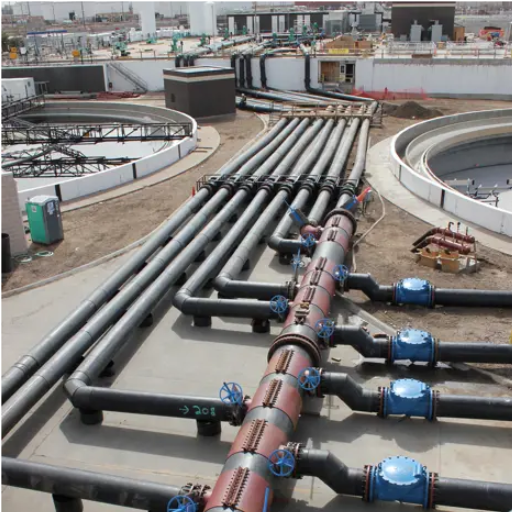
Differences Between HDPE and PVC
High-density Polyethylene (HDPE) is capable of more bending, has better resistance to tough conditions, and has a long life compared to PVC, which is tougher and has a greater tensile strength but is a bit too rigid and has lower resistance to sunlight.
|
Aspect |
HDPE |
PVC |
|---|---|---|
|
Flexibility |
Elasticity |
Rigidity |
|
Strength |
Resilience |
Tensile Power |
|
UV Stability |
Resistant |
Vulnerable |
|
Temp Range |
Broad |
Narrow |
|
Connection |
Fusion |
Adhesive |
|
Curvature |
Tight |
Wide |
|
Expense |
Higher |
Lower |
|
Longevity |
Extended |
Limited |
|
Usage |
Diverse |
Specific |
Advantages of HDPE over PVC
According to the properties of the material, HDPE (High-Density Polyethylene) has more advantages over PVC (Polyvinyl Chloride); below are five key advantages of HDPE:
- Increased Flexibility: The HDPE has more flexibility compared to PVC and can therefore adjust more effectively to changes in its surroundings and pipe growth. Because of this its ability not to stretch makes suitable for use in areas of activity instability such as earthquakes, soil movement, movable buildings that do not differentiate easily.
- Decreased Ultraviolet Pollution: Polyethylene, especially High-Density Polyethylene (HDPE), has high UV resistance, which guarantees durability in sunlight screening. Such a feature reduces the probabilities of decomposition upon use in outdoor conditions and prolongs polyethylene’s life expectancy without the use of additional UV protection agents.
- Broader Temperature Range: When it comes to HDPE, it can survive a wider operational temperature range than PVC. For example, HDPE will still be in good working condition in such extreme conditions as -220°F (-140°C) or 180°F (82°C), while PVC will become fragile at the former and performs well only in a very narrow range of temperatures.
- Quality Handiwork: HDPE can withstand more life stresses, including physical and chemical attacks, water and weather, and as such can be used, without care, to much effect for prolonged periods as opposed to PVC. For example, HDPE pipes can be used for more than 50 years, even where conditions are less than favorable, and at a very reasonable cost when designing for service over a much longer period of time.
- Substantial And Sturdy Connections: HDPE pipelines use butt fusion and electrofusion technologies, which provide strength and accuracy of the joints without any visible welding defects. The development of water-soluble PVC also plays a great role in replacing HDPE pipes, especially since it does not require solvent bonding, as in the case of PVC pipes, for example.
All this has led to the use of HDPE as a material of choice in industries that call for sturdy, flexible, and long-lasting qualities.
Schedule 40 vs Schedule 80 Conduit
Lighter and easier to install due to its thinner walls, Schedule 40 conduit is different from Schedule 80 conduit, which has thicker walls, is more durable, and may be used in situations subjected to high pressures or high impacts.
|
Aspect |
Schedule 40 |
Schedule 80 |
|---|---|---|
|
Wall Thickness |
Thin |
Thick |
|
Durability |
Moderate |
High |
|
Pressure Rating |
Lower |
Higher |
|
Weight |
Lighter |
Heavier |
|
Ease of Install |
Easier |
Harder |
|
Cost |
Lower |
Higher |
|
Color |
White/Gray |
Gray |
|
Applications |
Light Duty |
Heavy Duty |
Applications of HDPE Conduit
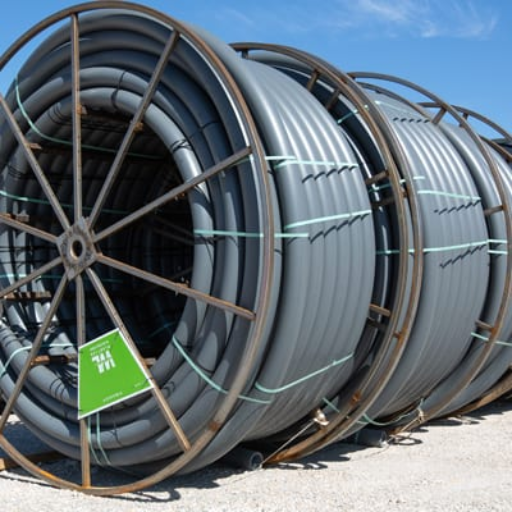
Use in Telecommunications
The popularity of HDPE conduits in the telecom industry can be attributed to their wear and tear resistance, ease of installation, and overall economic benefits over the life period of the material. These peculiarities make it easier to resolve the issues that arise in the course of the modern network construction, to maintain reliable highly efficient systems of high-speed data transmission.
- Fiber Optic Cable Protection: HDPE guns are commonly used to cover and protect fiber optic cables so as to shield them from all the adversities of the surrounding environment, including humidity, undue temperature, and mechanical load. The granting of fibre optic networks highly depends on the non-corrosive, rigid nature of the pipes to support the signals over long distances.
- Underground Cable Installation: HDPE conduit is the best choice for such structures due to its higher flexibility and higher crush resistance for easier maneuvering, which in turn lowers the risk of any damage from soil or external forces. Importantly, such a technology reduces the site time and required for excavation, making it more efficient in comparison to some other methods.
- Aerial Telecommunications Networks: HDPE conduit with a hollow structure is suitable for use in overhead cable networks. Calm stuff that tuber content is extremely high as such, very hot muscles are needed to transfer extra heat onto the sheet, especially during heavy weather conditions.
- Service Drops and Distribution: HDPE conduit is also helpful in service drops hence it enables the so called last – mile connection that brings the cables even to individual homes and offices. In essence, its ruggedness and ease of installation make its application in the massive deployment of telecommunication networks even in outlying areas of towns socially acceptable.
- Data Centers and Critical Infrastructure: The material used in data centers is High-Density Polyethylene (HDPE) conduit, which protects sensitive wires and cables from unwanted external interferences. In addition, this material supports high-speed internet connections effectively and eliminates the chance of cables breaking or malfunctioning mechanically. High chemical resistance levels ensure and improve the performance in rough areas that involve a lot of chemical substance exposure.
The importance of HDPE conduit in improving but also addressing the current and future fiber optic networks needs is evident in such applications.
HDPE in Construction Projects
High-density polyethylene (abbreviated as HDPE) is a versatile material that is extensively used in building and construction for all the good reasons ranging from its robust features, cost-effectiveness as well as ease of application especially. It may be required for structures which need materials that can bear large loads, yet still be bending and this is due to the favorable strength vs. material density ration. HDPE is very common in water lines, gas pipelines and sewage systems, especially due to their applications since reinforced with HDPE and other relining materials, they materials are expected to be more resistant to corrosion and other materials issues of things as steel or concrete, normally used in these applications. Additionally, more importantly, this functionality will greatly reduce repair operations as well as extend the service life of the structures.
HDPE is commended for its ability to work efficiently in a wide range of climatic zones. The pipelines made of high-density polyvinyl chloride and other utility connection materials can withstand the widest temperature range, and they are easy to use in high-temperature regions or very cold areas. It is light to carry from one place to another, making access and fitting of the geomembrane cheaper in order to even lower project costs and reduce the workforce required. Due to the barriers that function as containment structures and contain the collected waste, HDPE liners are commonly used in construction works within the arenas of geotechnical and environmental engineering on landfills, water storage structures, and various irrigation structures.
The sustainability credentials of the material also fit in with the ethos of the green building movement, which mainly focuses on the use of sustainable materials. According to the manufacturers, HDPE is 100% recyclable and has a low environmental impact during its production and usage. Even if it is wasted, the product is less damaging to the environment during the follow-up processes due to its recyclable nature, which adheres to the principles of the circular economy. Additionally, the property of HDPE being a resistant and long-lasting material means that less frequent replacement is necessary so as to save on resources over time. It is observed that in the construction industry, conventional methods of construction are history with most construction activities occurring sustainably. As a result, many structures, be it buildings or bridges, use HDPE extensively as a result of the fact that it is robust, versatile, and eco-friendly, which contributes to its popularity in the construction sector.
Renewable Energy Applications
High-Density Polyethylene (HDPE) plays a crucial role in numerous renewable energy applications due to its durability, chemical resistance, and adaptability. Its integration into these systems helps enhance performance, reduce costs, and improve environmental sustainability. Below are five key applications of HDPE in the renewable energy sector:
- Modules for Panel Frame Construction: The systems of solar panel mounting consist of the frame modules made of HDPE. Their effectiveness and resistance to the weathering factors, including the ultraviolet radiation, enable their long lives, rendering outdoor installations significantly less costly and cost-efficient.
- Containers for Biodegradation Units: HDPE tanks and semi-permeable liners are used for gas detention in order to store and treat these materials or substances. HDPE’s inert behavior, which causes no biogases, is a hindrance to the tank’s functionality and lengthens the service life of the biogas system.
- Plastics for Wind Turbine Blades: HDPE is commonly used in applications like cable protectors or protective backing in the energy systems that are primarily in wind energy systems. Installing enclosed cable run systems is straightforward and will offer durable protection to these delicate parts even when harsh weather conditions occur.
- Hydropower Systems: Small-scale hydropower schemes use HDPE pipes carrying the water from the river or stream to the power generating stations. This material can resist extremely high pressure and is resistant to corrosion which makes it very useful for aquatic projects over significant periods of time.
- Geothermal Energy Systems: Geothermal power involves the use of buried pipes in the ground that circulate fluids with HDPE systems, especially ground source heat pumps. This is primarily because of their high thermal conductance, high flexibility, and good standing against high temperatures – all these enable them to efficiently transfer heat from the ground to the building systems.
These applications demonstrate HDPE’s versatility and importance in driving the adoption of renewable energy technologies, further supporting global efforts toward sustainability and carbon reduction.
Reference sources
Frequently Asked Questions (FAQ)
Q: What is HDPE electrical conduit used for?
A: HDPE electrical conduit is primarily used for protecting electrical wires and cables in various applications, including underground installations. Its high-density polyethylene composition provides durability and resistance to environmental factors, making it suitable for both utility and telecommunications purposes.
Q: How does HDPE conduit compare to PVC?
A: While both HDPE conduit and PVC are used for electrical applications, HDPE offers superior flexibility and impact resistance. HDPE electrical conduit is also more resistant to UV rays and can handle a wider range of temperatures, making it a preferred choice for outdoor and underground installations.
Q: What are the specifications for HDPE pipe used in electrical applications?
A: HDPE pipe used for electrical applications typically adheres to ASTM D3485 standards. The specifications include parameters such as wall thickness, SDR (Standard Dimension Ratio), and material properties that ensure durability and compliance with various utility codes.
Q: Can HDPE electrical conduit be used for fiber optic cables?
A: Yes, HDPE electrical conduit is an excellent choice for protecting fiber optic cables. Its smooth wall design minimizes friction during cable installation and provides long-term protection from environmental conditions, ensuring the integrity of the fiber optic system.
Q: What is the process for installing HDPE conduit underground?
A: Installing HDPE electrical conduit underground typically involves trenching to bury the conduit at a depth that complies with local utility codes. The conduit should be properly aligned and secured with fittings, ensuring that it remains stable and protected from crush damage.
Q: What sizes of HDPE conduit are available?
A: HDPE electrical conduit is available in various sizes to accommodate different applications. Common sizes include 1 inch to 6 inches in diameter, with options for SDR 11 and SDR 13.5, allowing for customization based on specific installation requirements.
Q: Is HDPE conduit suitable for direct bury applications?
A: Yes, HDPE electrical conduit is specifically designed for direct bury applications. Its durable construction and resistance to moisture and chemicals make it ideal for underground use, providing reliable cable protection without the need for additional housing.
Q: What are the advantages of using smooth wall conduit?
A: Smooth wall HDPE electrical conduit offers several advantages, including reduced friction during cable installation, enhanced cable protection, and improved resistance to corrosion and environmental impacts. This makes it a popular choice for both commercial and residential electrical installations.
Q: Are there any limitations to using HDPE electrical conduit?
A: While HDPE electrical conduit offers many benefits, it does have some limitations. It may not be suitable for high-temperature applications or areas with extreme mechanical stress unless specifically rated. Additionally, proper installation techniques must be followed to ensure its effectiveness and compliance with utility standards.



